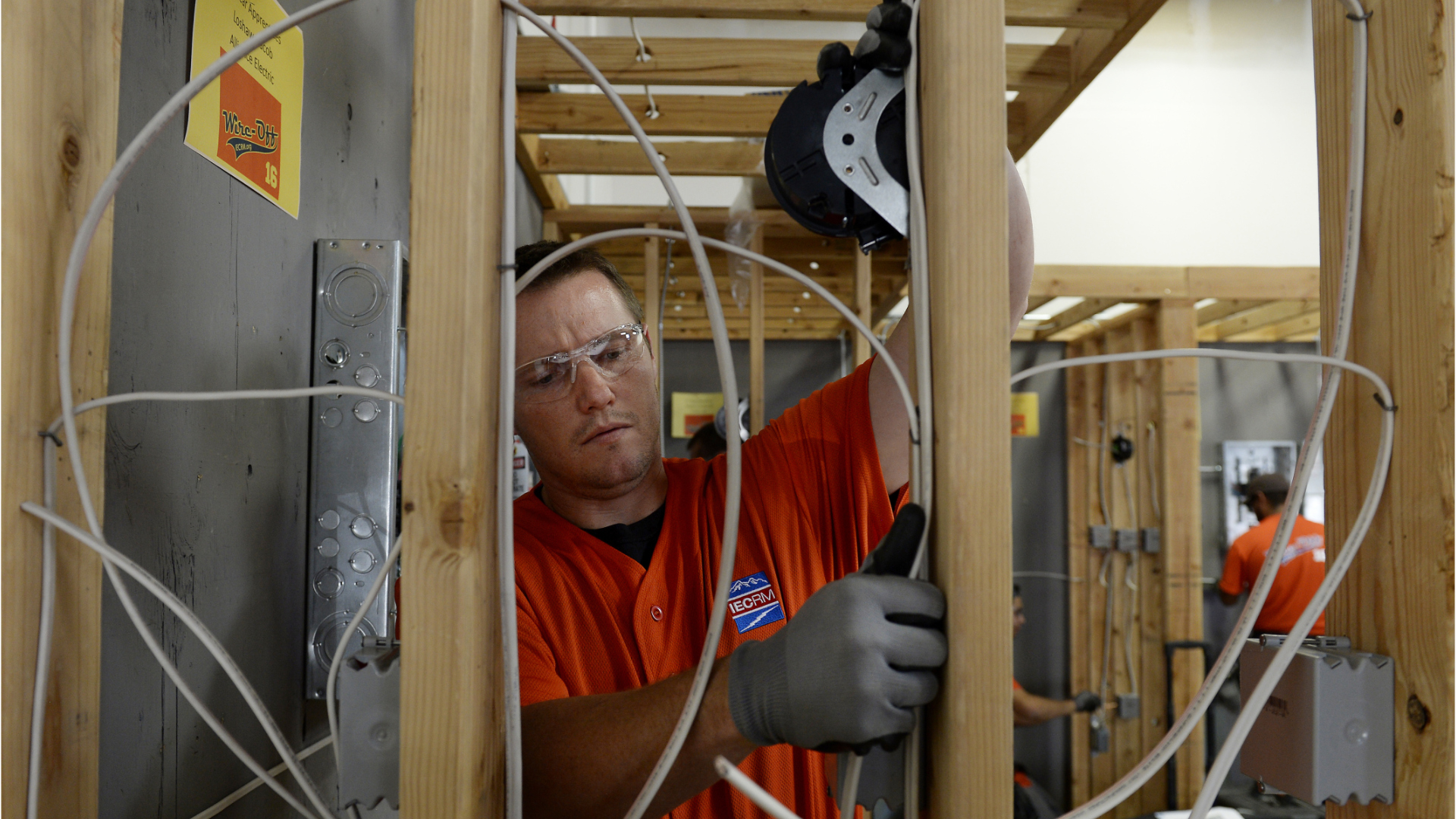Helpers--Electricians
Electrical Apprentice, Electrician Apprentice, Electrician Helper, Electrician's Helper
 Select a military branch to see samples.
Select a military branch to see samples.
Electrical Power Production; Electrical Power Production Apprentice; Electrical Power Production Craftsman; Electrical Power Production Helper; Electrical Power Production Journeyman; Electrical Systems; Electrical Systems Apprentice; Electrical Systems Craftsman; Electrical Systems Helper; Electrical Systems Journeyman
Interior Electrician
Damage Controlman; Electrician's Mate; Marine Safety Specialist Engineer; Material Maintenance Specialty
Cyberspace Warfare Operator; Electrician; Network Administrator; Support Equipment Electrician/Refrigeration and Engine/Gas Turbine Technician; Utilities Systems Technician
Construction Electrician; Fire Controlman
No similar titles were found.
What they do:
Help electricians by performing duties requiring less skill. Duties include using, supplying, or holding materials or tools, and cleaning work area and equipment.
On the job, you would:
- Strip insulation from wire ends, using wire stripping pliers, and attach wires to terminals for subsequent soldering.
- Trace out short circuits in wiring, using test meter.
- Measure, cut, and bend wire and conduit, using measuring instruments and hand tools.
Knowledge
Engineering and Technology
- building and construction
- mechanical
Safety and Government
- public safety and security
Business
- customer service
- management
Education and Training
- teaching and course design
Skills
Basic Skills
- listening to others, not interrupting, and asking good questions
- talking to others
Problem Solving
- noticing a problem and figuring out the best way to solve it
Abilities
Hand and Finger Use
- hold or move items with your hands
- keep your arm or hand steady
Attention
- pay attention to something without being distracted
Personality
People interested in this work like activities that include practical, hands-on problems and solutions.
They do well at jobs that need:
- Dependability
- Attention to Detail
- Cautiousness
- Cooperation
- Perseverance
- Integrity
Technology
You might use software like this on the job:
Spreadsheet software
- Microsoft Excel
Office suite software
- Microsoft Office software
Word processing software
- Report generation software
Education
Education: (rated 2 of 5)
high school diploma/GED or
certificate after high school
usually needed
certificate after high school
usually needed
Job Outlook
Below Average
New job opportunities are less likely in the future.
Explore More
- Electricians
- Helpers--Carpenters
- Helpers--Installation, Maintenance, & Repair Workers
- Helpers--Pipelayers, Plumbers, Pipefitters, & Steamfitters
- Millwrights
You might like a career in one of these industries:
See more details at O*NET OnLine about Helpers--Electricians.





